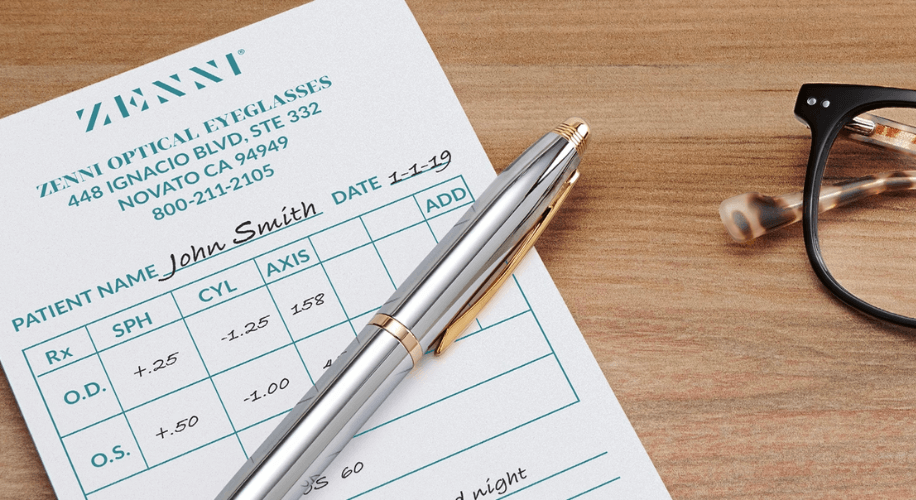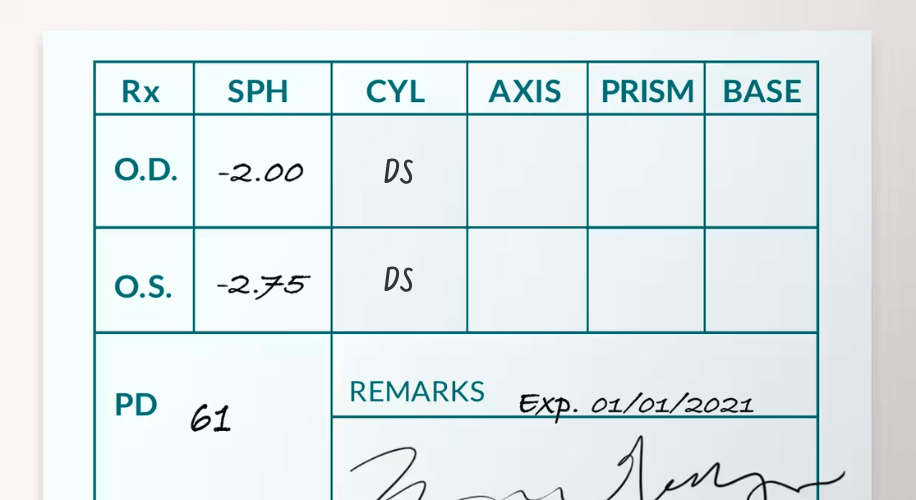Decoding Eye Prescriptions: What Does ‘DS’ Mean?
- BY Dr. Sophia Moh
- IN Eye Care
An eye prescription is a written order from an optometrist or ophthalmologist that specifies the corrective lenses needed to improve a person’s vision. It contains various abbreviations and terms that can be confusing for those unfamiliar with the world of optometry. Understanding these prescriptions is essential for obtaining the right eyewear and ensuring optimal vision correction.
Understanding Eye Prescriptions

What is an Eye Prescription?
An eye prescription is a document that indicates the type and degree of vision correction required for an individual. It is based on the results of an eye examination conducted by a qualified eye care professional. It typically includes information about the person’s refractive errors and any other specific needs or recommendations.
The Importance of Eye Prescriptions
Eye prescriptions play a crucial role in ensuring that individuals receive the correct prescription lenses for their specific visual requirements. Without an accurate prescription, people may experience blurry vision, eye strain, headaches, or other discomforts. Therefore, it is vital to have regular eye examinations and update your prescription as needed.
Components of an Eye Prescription

Sphere (SPH)
The sphere value in an eye prescription indicates the degree of nearsightedness or farsightedness. A negative sphere value (e.g., -2.50) denotes nearsightedness, while a positive sphere value (e.g., +1.75) indicates farsightedness.
Cylinder (CYL)
The cylinder value represents the presence of astigmatism. It measures the degree of irregular curvature of the cornea or lens. The higher the cylinder value, the more significant the astigmatism.
Axis
The axis value denotes the orientation of the astigmatism. It is measured in degrees and indicates the position of the astigmatism on the cornea or lens. The axis value ranges from 0 to 180 degrees.
Decoding “DS” in Eye Prescriptions

What does “DS” mean?
In eye prescriptions, “DS” stands for “diopter sphere,” which indicates that no cylindrical correction is needed for astigmatism. It implies that the person’s cornea or lens is uniformly curved and does not require additional adjustments for astigmatism.
When is “DS” used in an Eye Prescription?
“DS” is used when there is no astigmatism present in the person’s visual correction. It is typically seen in prescriptions for individuals who only require spherical correction for nearsightedness or farsightedness.
How does “DS” affect vision?
If “DS” is present in your eye prescription, it means that you do not have astigmatism. The absence of astigmatism may result in a more straightforward vision correction process, as you only need to focus on the spherical component of your prescription. However, it is crucial to consult with your eye care professional to ensure that you understand the full implications of your prescription.
Other Abbreviations and Terms in Eye Prescriptions

Eye prescriptions may contain various other abbreviations that describe specific conditions or requirements. Some common abbreviations include:
- OD: Oculus Dexter, meaning right eye
- OS: Oculus Sinister, meaning left eye
- OU: Oculus Uterque, meaning both eyes
- ADD: Addition, indicating the additional power needed for reading or close-up work in multifocal lenses
- Pupillary Distance (PD): The distance between the centers of the pupils, which is crucial for ensuring proper lens alignment
Zenni Prescription Scan

Understanding eye prescriptions is very helpful when shopping online for prescription eyewear. Luckily, when you shop for eyewear at Zenni, we aim to make the process of entering your eyeglasses prescription as simple as possible with our Prescription Scan technology. All you have to do is take a photo of your prescription and we do the rest. Happy glasses shopping!
About the Author: Dr. Sophia Moh, OD, ABOC
Dr. Sophia Moh, OD is an optometrist located in Bay Area, California. She completed her undergraduate studies at UC San Diego and earned her doctorate at UC Berkeley School of Optometry. She has experience in a variety of eye care settings including primary care optometry, general ophthalmology, community health clinic, and Veterans Affairs. Her mission is to help the world see better by developing high-quality, affordable eyewear for everyone. She is also a certified American Board Optician (ABO) and provides training and lectures on optical education topics.
